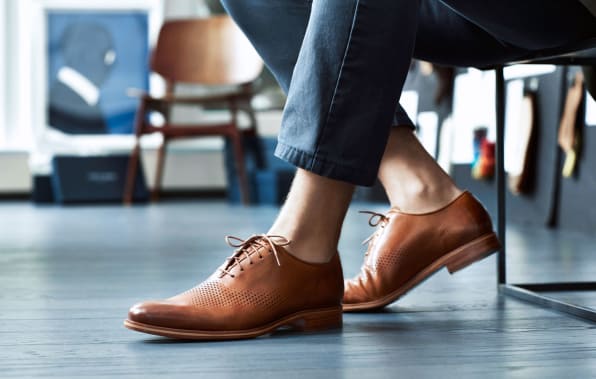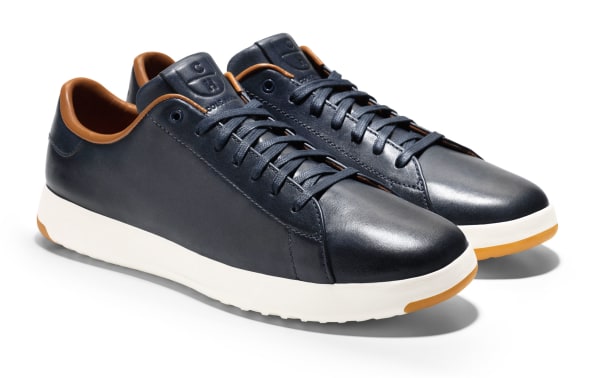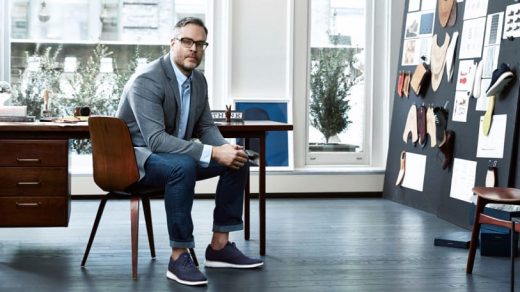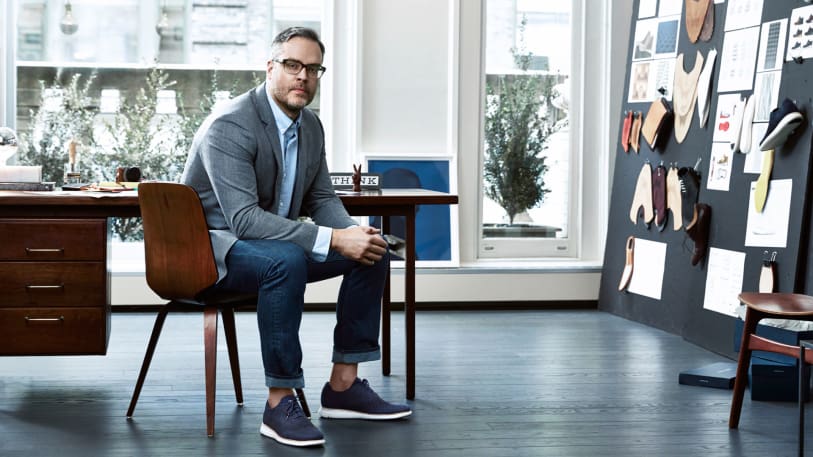Lessons From Inside Cole Haan’s Results-Driven Innovation Lab
I feel like I’ve stepped into a kind of Willy Wonka’s factory. But instead of magical candy, people here are dreaming up imaginative shoes.
I’m at Cole Haan’s innovation center, tucked away in the middle of farmhouses and seacoast communities in Greenland, New Hampshire. The space is filled with 3D printers, mood boards, tables littered with leather samples, and wooden benches strewn with cobbler’s lasts. Employees are quietly talking about improbable shoes: high heels that feel like sneakers, leather Oxfords that are virtually weightless, shoes that fit the foot like socks.
Over the last five years, Cole Haan has evolved from its roots as a purveyor of classic New England dress shoes into a brand known for pushing the boundaries of footwear. Every year, it releases new collections as part of the “Grand” line that meet a set of criteria that includes excellent cushioning, breathability, durability, and lightness. At the same time, the company has held on to its 89-year heritage by focusing on craftsmanship and high-quality materials.

Last September, we covered the launch of the GrandRevølution Washington, a $ 400 men’s dress shoe with a pliable sole and leather that is able to stretch for a full range of motion. According to the company, this model brought in the most revenue within the dress category last season. This year, it launched the GrandPrø Tennis, a set of leather sneakers weighing 5.6 ounces, which ended up being the most successful launch in the brand’s history, selling more shoes within in the first month than ever before. Much of the creativity that went into these new shoes began here, at the company’s New Hampshire innovation center.

One of the masterminds of this laboratory is Scott Patt, the company’s VP of design and innovation, whose background includes stints at Armani, Nike, and Converse. Two years ago, he was instrumental in building out the procedures at work here. He believes that maintaining some degree of discipline in the midst of creativity is key to making the innovation center as effective as possible. “Many innovation centers are just a bunch of brilliant people, huddled in a corner, coming up with random ideas,” he says. “I just don’t think that’s the best use of talent. I’d rather have my team focused on solving specific problems. Within those guardrails they can go crazy, but you need to have method in the madness.”
Human-Centered Innovation
The process here begins by plotting out the lifestyle of their typical customer. This means thinking about their trajectory over the course of a day, a week, and a year. This might mean going from the gym to work to dinner; from the office to weekend hikes or errands or going from summer sandals to winter boots. The team thinks about the existing pain point throughout this experience, such as the need to switch from dress shoes into sneakers on the commute by foot to an office, or the exact parts of a woman’s foot that hurt after 12 hours in four-inch heels, or the discomfort of wearing heavy winter boots to deal with the elements.

The team goes wild, imagining the kinds of shoes they might invent if they were not constrained by either science or convention. This is how the brand came up with the idea for a line of shoes that are essentially Oxfords on the top, but sneakers on the bottom. On first blush, this may seem like a whacky idea that defied the rules of fashion. But over the course of iterating and tweaking prototypes, Cole Haan developed a hybrid shoe that has become very popular.
“Shoes impact the entire experience of a person’s day,” Patt says. “The work we do here is driven by the belief that the work we are doing can improve people’s lives.”
Talent From Everywhere
Patt is proud of how diverse his team is. As I walk the floor of the innovation center, I stop by the desk of someone who used to be an animator for a video game studio building dynamic 3D models of shoes. Across the room, there’s someone trained in industrial design, who can talk through the molecular difference between materials. Another works with plaster and a sewing machine to quickly put together rudimentary prototypes. The company partners with university biomechanists who do scientific studies on the impact that a shoe has on the body. And given that Cole Haan began as a dress shoe company known for excellent craftsmanship, the company also works with traditional shoemakers who have been working with leather for decades.
I see all of the pieces of the puzzle come together in the construction of the women’s pumps. Many women wear high heels every day, but even though creative new styles flood the market every season, there hasn’t been much innovation when it comes to the structure of the pump.
Jeff Mokos, a director at the center trained in industrial design, has been tasked with making the pump more comfortable. In the development process, he worked with scientists to create heat maps of where exactly a woman feels pressure as she is walking with heels. There’s often pain in the toe box, since the foot is sliding down; there’s discomfort in the arch if the shoe is not exactly molded to the curvature of the foot; the heel is likely to ache since the entire weight of the body is being supported by the minuscule surface area of the heel.
Mokos worked to fix many of these problems with the Grand pump collection. The line has extra cushioning throughout the footbed, but especially in the Achilles area. It uses flexible leather that is able to promote natural movement and not chafe against the skin. And the heel itself has been imperceptibly moved forward to improve the center of gravity. “With high heels, there is so little real estate to work with,” he says. “But at the same time, little tweaks, such as moving the placement of the heel by a few millimeters, can totally alter the wearing experience.”
Perfection Is A Process
The problem with setting up the goal of crafting shoes that perfectly fit into the customer’s lifestyle is that there’s always room for improvement. Mokos had come up with several prototypes of heels that would eventually become the Eliza Grand and the Antoinette Grand pumps, but he wanted to keep tinkering to find ways of making the shoe even more comfortable. At a given point, however, it was time to pass on the shoe to the rest of the team, so it could go into production. The very next day, he was back at work, seeing whether he could make the next iteration even better.
The innovation team must balance bringing new products to market with the feeling that there is still more left to be done. It helps to have a clear set of goals from the outset, so that employees can tick off what they were able to accomplish in each round. In the end, Cole Haan tends to approach shoes the way a tech company approaches software: Each new season brings an opportunity to create updated versions of shoes. Two years after the company released its ZERØGRAND line, designed to mimic the movement of the human foot, it came up with 2.ZERØGRAND full of tweaks to make the shoes even more dynamic.
“The thing about innovation is that you never get to that point where you can sit back and think, “Wow, we totally solved that. Good job, us!” Patt says. “There’s always customer feedback coming in, helping us get to the next version.”
(81)














